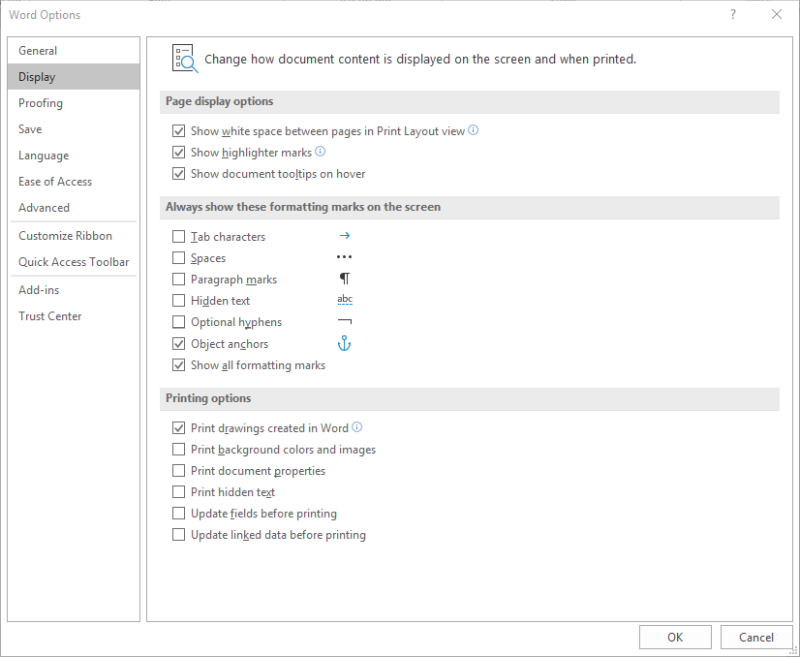How to Write Continued on Next Page
Please Note: This article is written for users of the following Microsoft Word versions: 2007, 2010, 2013, 2016, 2019, and Word in Microsoft 365. If you are using an earlier version (Word 2003 or earlier), this tip may not work for you. For a version of this tip written specifically for earlier versions of Word, click here: Using Continued Lines.
Using Continued Lines
One WordTips reader wrote about a special page numbering need for their organization. Besides placing a regular page number at the top of a page, on the previous page they place a footer that tells the upcoming page number. For instance, at the bottom of page 1 you might place "Continued on page 2." The question was how to place such a footer on each page except the last one, and how the proper page number can be placed there.
There is no built-in, automatic way to do this in Word. All the information you need is, however, available through use of Word's fields. A compound field (implemented by putting a field within a field) will do the trick. The following compound field allows you to place the proper information at the bottom of each page. A different footer appears on the last page.
{ IF { PAGE } < { NUMPAGES } "Continued on page {={PAGE} + 1}" "Last Page"} Note the use of the incremented page number in the field so that the next page is always referenced. If you want to change the exact text that appears with the incremented page number, then simply change the info appearing between the quote marks, but outside the compound page number field. (In this case, it is the text 'Continued on page '.) In addition, if you don't want any footer to appear on the last page of the document, then delete the "Last Page" portion of the field (including the quote marks).
You can insert field braces by pressing Ctrl+F9 and you can nest different fields, as this tip requires, by using the same shortcut key. To create the desired footer, open your document and follow these steps.
- If the document has several sections, position the insertion point anywhere in the section where you want the footer to appear.
- In the Insert tab of the ribbon, look in the Header & Footer group. Click on the Header and/or Footer control and Word displays a drop-down list of templates to pick from.
- After inserting a header or footer, the conditional Header & Footers Tools Design tab is displayed by Word.
- Enter the compound field (as shown previously in this tip).
- With the insertion point within the compound field you created, press Shift+F9 to collapse the field.
- In the Header & Footer Tools Design tab, look in the Close group. When you click on the Close Header and Footer tool Word returns focus to the body of the document.
When you create the fields, make sure you use the proper spelling of the field names, and that the quote marks are included as indicated.
When you use a field such as this, it is a good idea to either manually update the fields before printing, or make sure Word is set to do this automatically. You can check this by following these steps:
- Display the Word Options dialog box. (In Word 2007 click the Office button and then click Word Options. In Word 2010 or a later version, display the File tab of the ribbon and then click Options.)
- Select the Display option in the left-hand column. (See Figure 1.)
- Make sure the Update Fields before Printing check box is selected.
- Click on OK to save changes and exit the dialog box.

Figure 1. Display Options pane of the Word Options dialog box.
Now, whenever you print, Word first updates every field in the document before the first page is produced. This ensures that your footers appear as you desire.
WordTips is your source for cost-effective Microsoft Word training. (Microsoft Word is the most popular word processing software in the world.) This tip (8656) applies to Microsoft Word 2007, 2010, 2013, 2016, 2019, and Word in Microsoft 365. You can find a version of this tip for the older menu interface of Word here: Using Continued Lines.
Source: https://wordribbon.tips.net/T008656_Using_Continued_Lines.html
 Please Note: This article is written for users of the following Microsoft Word versions: 2007, 2010, 2013, 2016, 2019, and Word in Microsoft 365. If you are using an earlier version (Word 2003 or earlier), this tip may not work for you. For a version of this tip written specifically for earlier versions of Word, click here: Using Continued Lines.
Please Note: This article is written for users of the following Microsoft Word versions: 2007, 2010, 2013, 2016, 2019, and Word in Microsoft 365. If you are using an earlier version (Word 2003 or earlier), this tip may not work for you. For a version of this tip written specifically for earlier versions of Word, click here: Using Continued Lines.
0 Response to "How to Write Continued on Next Page"
Post a Comment